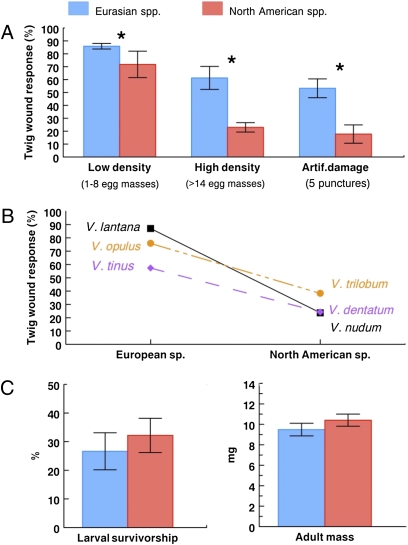Fig. 3.
(A) Plant defense (twig wound response) in response to beetle oviposition (low and high egg mass densities) and artificial damage on Viburnum spp. of different continental origin (summary of nine Eurasian and six North American species) from a field common garden (mean ± SEM). Asterisk indicates a significant difference after accounting for phylogenetic nonindependence (α = 0.05). (B) Specific comparison of the wound response at high egg mass density of the European species fed on by P. viburni in its native range and their close North American relatives. This result is robust to various species pairings (for example, if V. dentatum is substituted by V. rafinesquianum as the comparison species for V. tinus or if V. lentago or V. prunifolium is used as the comparison species for V. lantana) (Table S1). (C) Insect performance (average of laboratory and field values for survivorship and adult mass; mean ± SEM) on Viburnum spp. of different origin (10 Eurasian and 5 North American species) (Table S1).

